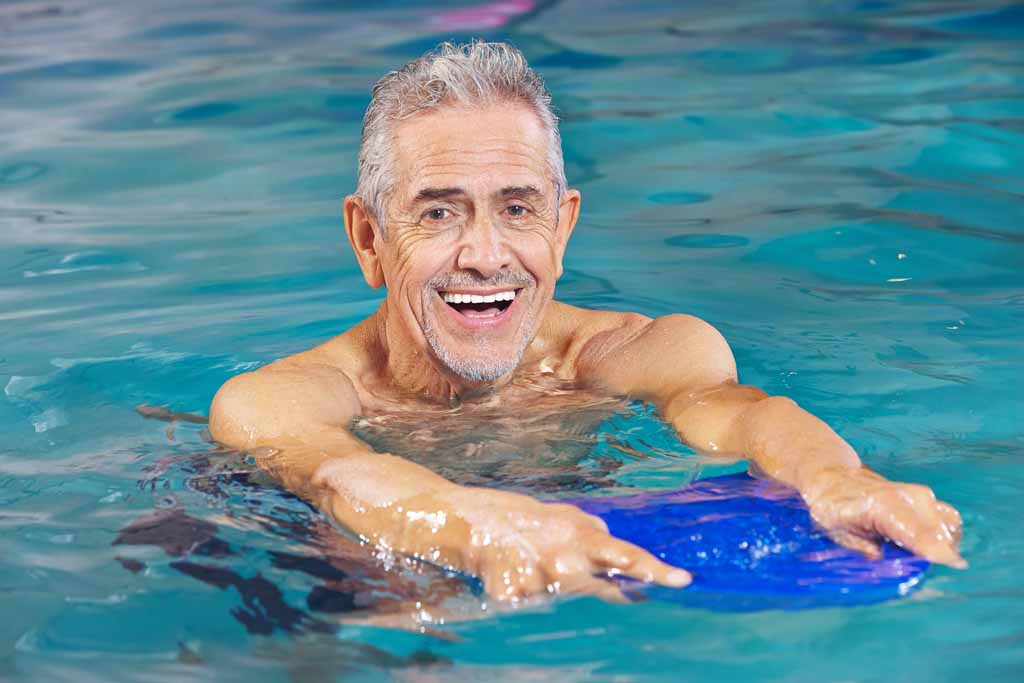
6 Reasons why swimming is good for you
It’s very important to know that when we want to exercise there are lots of different options of activities and sports. Running and cycling consider being the main types of aerobic exercise and especially when we try to lose or maintain weight. Swimming though is another option with lots of other positive effects on the body.
1. Swimming is the type of exercise that can help us burn calories while at the same time we can strengthen our muscles and lengthen the muscles fibers. When you follow a workout in the gym you normally have to do a bit of running at the beginning (to warm up the body), weight lifting to build up muscle mass and stretching in the end to avoid injuries and stiffness. Swimming is an all in one type of exercise while burning calories and fat.
2. Lots of doctors, physiotherapists or fitness experts usually advise people to start swimming after an injury. Swimming is great for recovery and for slowly strengthening the body after an injury. It is also injury – free and can help to protect your bones and your joints as there are minor impacts in the water. It has been found that swimming may improve and help on the treatment of osteopenia (Orwoll et al., 1989) as well as it can improve the bone mass density and decrease osteoporosis in comparison to people who don’t exercise (Andreoli et. al., 2001).
3. Swimming is a way to exercise all the muscles at the same time while improves the cardiovascular strength and stamina. When we do weight lifting or strength training we mainly focus at exercising one muscle at a time. With swimming you can tone up and train all your muscles together. There are also some findings that swimming can help to prevent from respiratory conditions and asthma as it increases the lung volume (Font-Rivera et al., 2011, Font-Rivera et al., 2014).
4. Did you know that swimming can help you to reduce your blood pressure? Studies have reported (Bassett et al., 1997, Nualnim et al., 2011) that moderate levels of swimming can help to lower the systolic blood pressure to individuals with hypertension when compared with a control group or to previous sedentary individuals. If you have just been diagnosed with blood pressure or if you blood pressure is slightly raised, I would definitely recommend adding swimming in your daily routine or at least 2 to 3 times a week.
5. Swimming can have positive psychological effects, be refreshing for the body and mind and stress free. Similar to other type of exercises when swimming, endorphins are increased in the body and that make us feel happier and more energetic.
6. Last but not least have you ever thought how many different options swimming can give you? It consists of four different strokes frontcrawl, backstroke, breastroke and butterfly and you can always combine the strokes and do your own exercises. If you are a team player you can also try swimming in a team, water polo, underwater rugby, synchronized swimming, diving as well as classes like aqua aerobic and aqua Zumba.
Just remember that you don’t need to be Michael Phelps to start swimming. Swimming is for everyone, at any age, for pregnant women and for people with any disabilities. Keep in mind as well that Tom Daley will always be happy to help you improve your diving technique!
- Orwoll, E., S., Ferar, J., Oviatt, S., K., McClung, M., R., Huntington, K. (1989). The relationship of swimming exercise to bone mass in men and women. Arch Intern Med, 149 (10), 2197 – 2200.
- Andreoli, A., Monteleone, M., Van Loan, M., Promenzio, U., Tarantino, U. and De Lorenzo, A. (2001). Effects of different sports on bone density and muscle mass in highly trained athletes. Med Sci Sports Exer, 33(4), 507 – 511.
- Font-Ribera, L., Villanueva, C. M., Nieuwenhuijsen, M. J., Zock, J., Kogevinas, M. and Henderson, J. (2011). Swimming pool attendance, asthma, allergies, and lung function in the avon longitudinal study of parents and children cohort. American Journal of Respiratory and Critical Care Medicine, 183 (5), 582 – 588.
- Font – Ribera, L., Villanueva, C.M., Gracia-Lavedan, E., Borras-Santos, A., Kogevinas, M., and Zock, J.P. (2014). Indoor swimming pool attendance and respiratory and dermal health in schoolchildren-HITEA Catalonia. Respir Med, 108 (7), 1056 – 9.
- Basett, T. H., Howley, D. R.Jr, Thompson, E., Muhammad, D. L. A. and Freeman R. (1997). Swimming training lowers the resting blood pressure in individuals with hypertension. Journal of Hypertension, 15 (6), 651 – 657.



